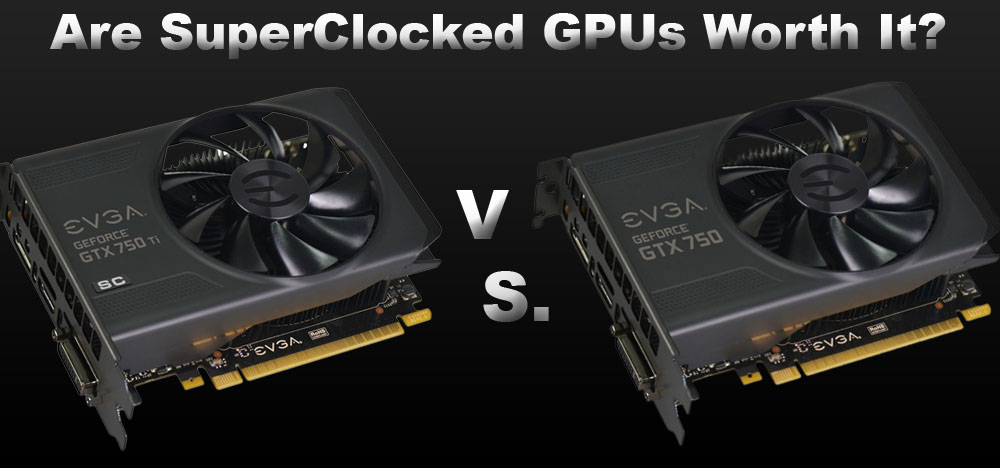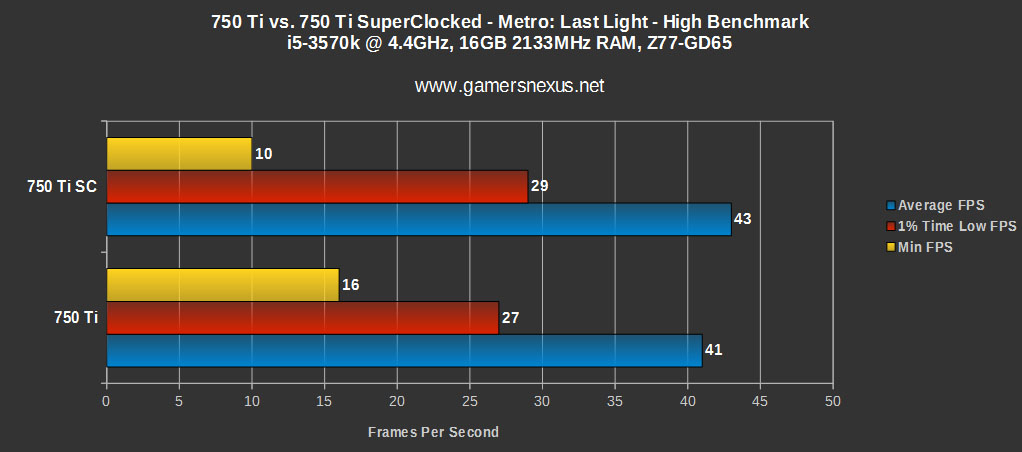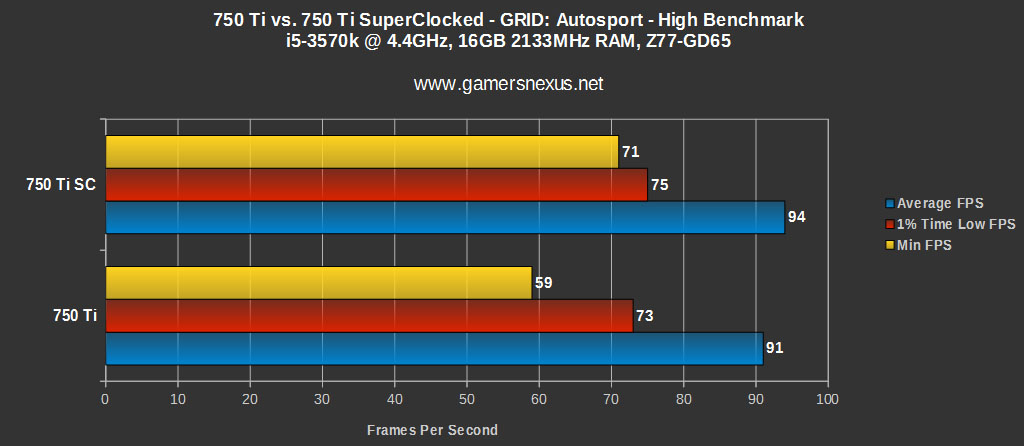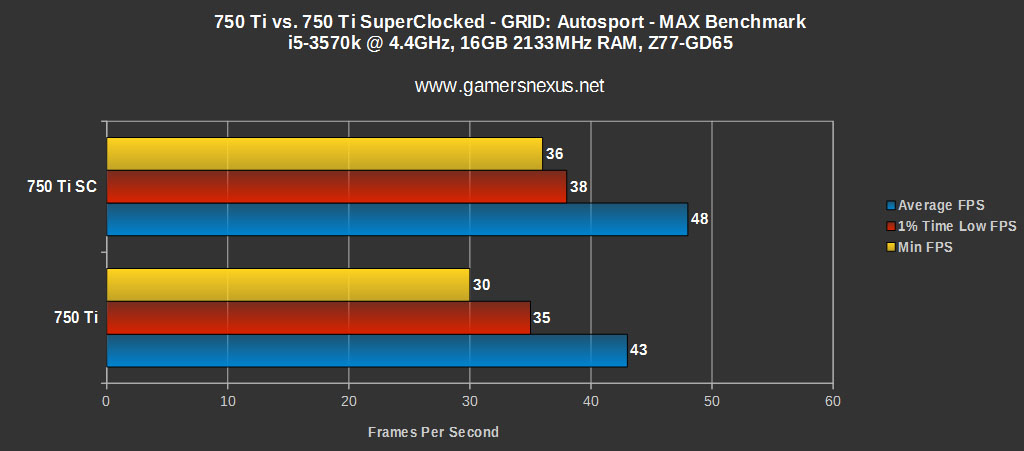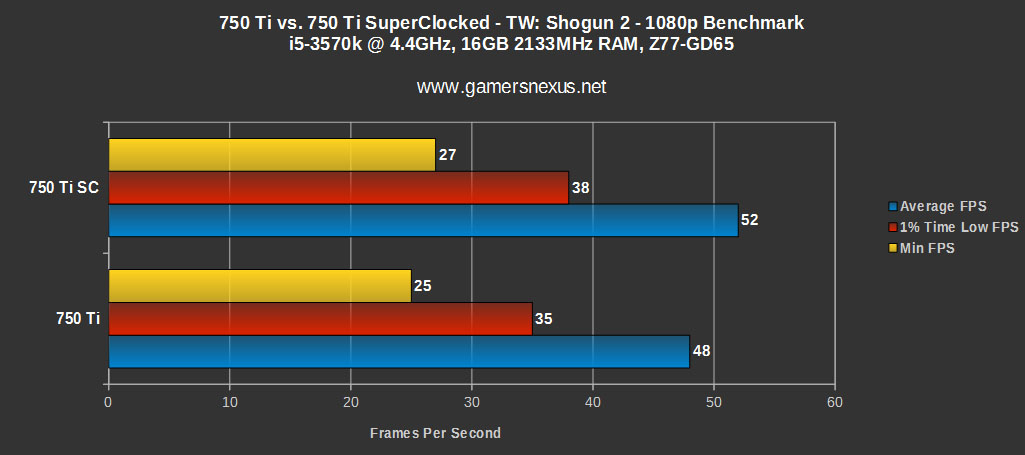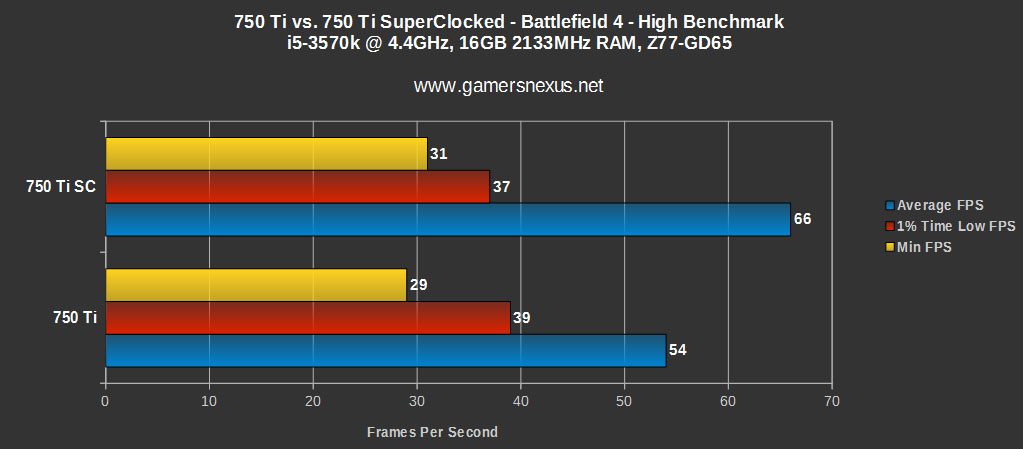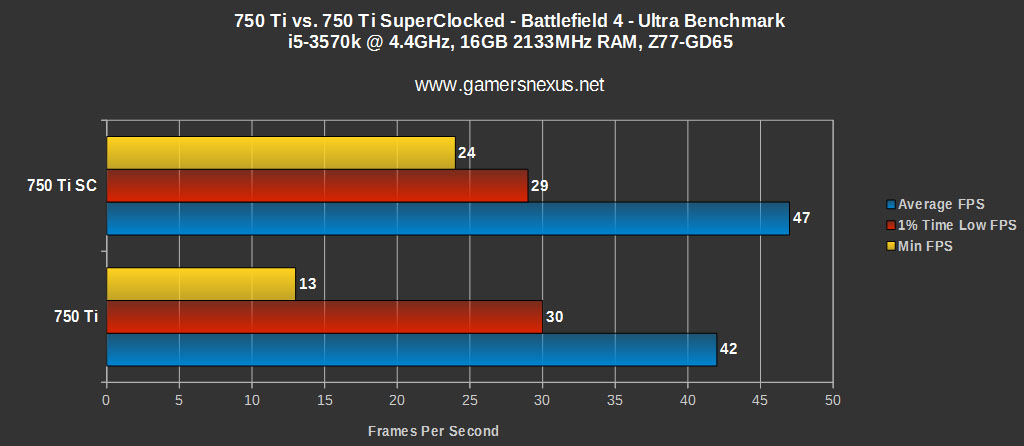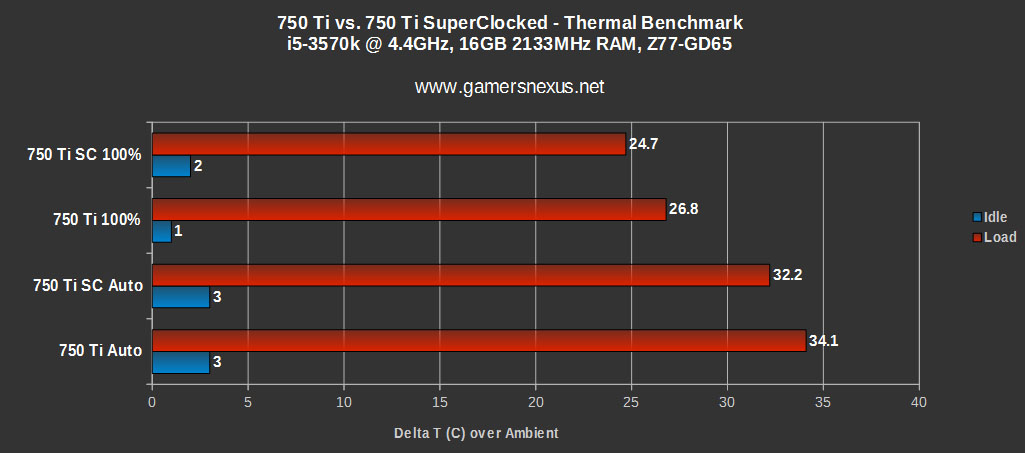Retailers and manufacturers are always happy to give consumers purchasing options: Spend an extra $30 and get buying insurance, another $50 and you get an extended warranty, spend untold thousands on a car to add Bluetooth, and in the case of video cards, an extra $20 and you get a “faster” card in the form of a pre-OC or “SuperClock.”
We’ve explained overclocking as it pertains to GPUs in the past, but never looked specifically at pre-overclocked or SuperClocked cards. The realistic intent of higher-clocked GPUs is to enable users who are either too busy/lazy to overclock, would prefer to have an expert do it for them, or who are legitimately unaware of or afraid of overclocking. Some of the high-end overclocking cards are binned-out with hotter chips (chips that can overclock higher), but not all SuperClocked and pre-overclocked cards are like this. Many of the available options are just overclocked versions of the stock card.
And so we arrive here. We’re looking at whether a SuperClocked video card is worth the extra money, specifically testing an EVGA 750 Ti 2GB ($145) card vs. an EVGA 750 Ti 2GB SC ($160) (superclocked) card. We tested for FPS and thermals, then tested whether the non-SC item could be overclocked to achieve similar speeds to the SuperClocked card.
Note that this is a small sample size of only two cards with only one GPU (GM107). We can extrapolate that the comparison is somewhat linear between most other SC cards within the same ~+150MHz BCLK range, but there is always room for discrepancy. This test does not account for high-end OC cards like the K|NGP|N.
NVidia GTX 750 Ti vs. SuperClocked Specs
| GTX 750 Ti | GTX 750 Ti SuperClocked | |
| GPU | GM107 | GM107 |
| Core CLK | 1020MHz | 1176MHz |
| Boost CLK | 1085MHz | 1255MHz |
| Memory | 2GB GDDR5 5400MHz Effective Mem CLK | 2GB GDDR5 5400MHz Effective Mem CLK |
| CUDA Cores | 640 | 640 |
| Price | $145 | $160 |
EVGA 750 Ti vs. EVGA 750 Ti SC Overclocking Performance
A SuperClocked card primarily hosts a higher base clock (BCLK) and boost clock, though there might be unmentioned modifications to memory clock on some devices. The stock EVGA 750 Ti non-SC card ships with a 1020MHz BCLK and 1085MHz Boost CLK. Its SuperClocked alternative hosts an 1176MHz BCLK and 1255MHz Boost CLK, so it’s a 14.2% overclock from stock (or ~156MHz faster BCLK).
Both tested devices are intentionally sourced from EVGA, with both devices hosting otherwise identical specs -- the same GPU, the same capacity, and even the same cooler.
Test Methodology
Our standard test methodology applies here. For thermal benchmarking, we deployed FurMark to place the GPU under 100% load while logging thermals with HW Monitor+. FurMark executed its included 1080p burn-in test for this synthetic thermal benchmarking. In FPS and game benchmark performance testing, we used the following titles:
- Metro: Last Light Benchmark.
- GRID: Autosport Benchmark.
- Battlefield 4 Gameplay.
- Total War: Shogun 2 Benchmark.
FRAPS was used to log frametime and framerate performance during a 120 second session. FRAFS was used for analysis. Tests were conducted three times for parity.
NVidia 340.43 beta drivers were used for all tests conducted on nVidia's GPUs. The 340.43 beta introduced performance improvements specifically for GRID. AMD 14.7 drivers were used for the AMD cards, which contain no notes of GRID-specific improvements.
| GN Test Bench 2013 | Name | Courtesy Of | Cost |
| Video Card | (This is what we're testing). | GamersNexus, NVidia. | $145, $160. |
| CPU | Intel i5-3570k CPU Intel i7-4770K CPU (alternative bench). | GamersNexus CyberPower | ~$220 |
| Memory | 16GB Kingston HyperX Genesis 10th Anniv. @ 2400MHz | Kingston Tech. | ~$117 |
| Motherboard | MSI Z77A-GD65 OC Board | GamersNexus | ~$160 |
| Power Supply | NZXT HALE90 V2 | NZXT | Pending |
| SSD | Kingston 240GB HyperX 3K SSD | Kingston Tech. | ~$205 |
| Optical Drive | ASUS Optical Drive | GamersNexus | ~$20 |
| Case | Phantom 820 | NZXT | ~$130 |
| CPU Cooler | Thermaltake Frio Advanced | Thermaltake | ~$65 |
The system was kept in a constant thermal environment (21C - 22C at all times) while under test. 4x4GB memory modules were kept overclocked at 2133MHz. All case fans were set to 100% speed and automated fan control settings were disabled for purposes of test consistency and thermal stability.
A 120Hz display was connected for purposes of ensuring frame throttles were a non-issue. The native resolution of the display is 1920x1080. V-Sync was completely disabled for this test.
The other video cards tested include (found in previous benchmarks):
- AMD Radeon R9 290X 4GB (provided by CyberPower).
- AMD Radeon R9 270X 2GB (we're using reference; provided by AMD).
- AMD Radeon HD 7850 1GB (bought by GamersNexus).
- AMD Radeon R7 250X 1GB (equivalent to HD 7770; provided by AMD).
- NVidia GTX 780 Ti 3GB (provided by nVidia).
- NVidia GTX 780 3GB x 2 (provided by ZOTAC).
- NVidia GTX 770 2GB (we're using reference; provided by nVidia).
- NVidia GTX 750 Ti Superclocked 2GB (provided by nVidia).
Results: SuperClocked vs. Stock Performance - GTX 750 Ti vs. 750 Ti SC Benchmark
The results displayed will showcase FPS gain on various games between the two devices. We test for OC capabilities and thermals toward the end.
If you’re curious about how these results stack-up against other video cards (not just the 750 Ti), check out our GTX 750 Passive review for full charts.
Metro: Last Light
Rather than doing the usual two-blast test of Metro: Last Light on Very High and High, we just stuck to High due to GPU limitations. The test was conducted on “High” with “Normal” tessellation.
The gains here approximated ~5% with the SuperClocked card. Not exactly noticeable for most users. A 41FPS to 43FPS jump isn’t really worthwhile in this instance.
GRID: Autosport
Tested on the “High” preset and maximum settings (custom) options, GRID: Autosport produced the below results:
Gains with the SuperClocked device were approximately 3% on high and 11% on max. Pushing maxed-out settings forced the card to throttle more on the frequency, hence the performance jump. In raw FPS, that’s a move from 43 to 48FPS -- so not huge, but potentially valuable as the device ages and borderline playability issues emerge with new games.
Total War: Shogun 2
This one was tested more as a curiosity. The Total War series has historically been known for performing well as a CPU benchmark due to its computation-intensive turns in campaign mode. Shogun 2 doesn’t throttle too hard on the GPU, producing the swing shown below:
That’s about an 8% gain with the SuperClocked card. More than we were expecting, but again, not phenomenal. Not worth $20.
Battlefield 4 -- Finally, A Contender
Battlefield 4 produced pretty large gains on High -- nearly 20% higher FPS (on the same map with the same player count) -- and another 11% on Ultra.
The FPS hike isn’t as noticeable on “Ultra” due to throttling elsewhere in the GPU, but on “High,” our 20% improvement is the difference between retaining playable high settings at 60FPS and disabling options to retain 60FPS (with the non-SC card).
Thermals - 750 Ti vs. 750 Ti SC Temperatures
The temperatures are largely uninteresting. We just tested these for the passive GTX 750, if you’re interested in how other cards perform. Relative to each other, here’s what we’ve got:
The differences can be chalked-up to one chip running hotter than the other, all within normal manufacturing spec.
Can’t You Just OC These Things?
The answer is yes. Not all GPUs are created equal, but with the two we used in testing, it was trivial to overclock the non-SuperClocked 750 Ti to the same BCLK as the SC version. Voltage was left largely untouched, too, with Precision X and Afterburner being used to up the BCLK by 156MHz. Stability was kept in stress testing. The whole process took about 2 minutes to perform and was followed-up with overnight stress testing. No stability issues.
We had an identical performance output to the SuperClocked card after the overclocking endeavor. The SuperClocked card might be able to clock a little bit higher if EVGA shipped a hotter bin (they were unable to provide an answer to this in time for publication), but we can’t validate this without first-party confirmation or testing more than two devices ourselves. Regardless, the important bit is that the non-SC card can pretty easily OC to SC clocks, in our case.
Is a SuperClocked Card Worth it?
Maybe.
In the case of the 750 Ti and 750 Ti SC edition, the answer is probably going to be “no.” Unless you’re too busy to follow a guide and OC the 750 Ti, the $15-$20 extra isn’t worth it for most games. Even $10 isn’t worth it -- it’s just too easily done by hand and the gains are relatively small in most games. It’s certainly worth it in Battlefield 4 -- but again, it’s easy to just make a few clicks in Afterburner to achieve the same gains. I can see “business class” users (those who prefer not to touch anything and would rather just have something that “works”) get more use out of this type of feature.
The reason I said “maybe,” though, is that not all SC and pre-OC devices are the same. Some pre-overclocked cards can ship with significantly higher frequencies than our 14% gain in EVGA’s options, in which case it’s worth a serious consideration.
In the instance of SuperClocked cards that are a few bucks different in price and ~15% higher in clock (or less, normally), you’re probably better off just personally overclocking it should you really want the extra 4FPS.
- Steve “Lelldorianx” Burke.
